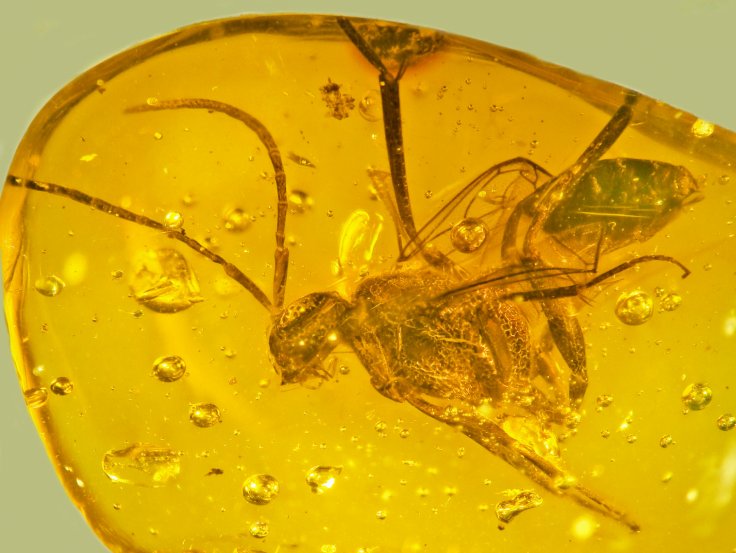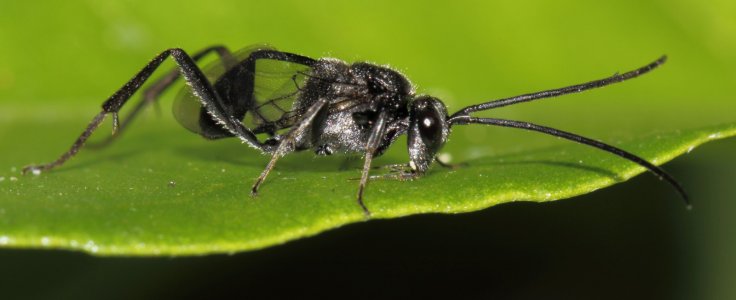The ensign wasp is known to be a proficient killer of cockroaches. Scientists from the Oregon State University have discovered four new species of the insect in fossilized amber from 25 million years ago, thereby, providing evidence that the parasitic wasp has been a cunning devourer of cockroaches for millions of years.
George Poinar Jr, lead author of the study, explained that certain species such as the ensign wasp are used to control cockroaches in buildings, and their presence is an indicator of the existence of cockroaches close by. "Our study shows these wasps were around some 20 or 30 million years ago, with probably the same behavioral patterns regarding cockroaches," he said.
'Waving' Like a Flag

The wasps derive their common name from their abdomens that closely resemble a flag. An ensign is a large flag found flying usually at the rear or stern end of a ship and specifies the nationality of the vessel. Scientifically, they are known as Evaniidae and belong to the order Hymenoptera.
Over 400 species of the parasitic wasps exist today, and they are distributed among 20 genera. They usually reach lengths between 5 to 7 millimeters and do not bite or sting. Except in the polar region, the wasps are found across all kinds of geographical environments.

"As the wasps move about, their 'ensign' is constantly moving up and down as if they are flag-waving," explained Poinar, who is an international expert on animal and plant life forms trapped in amber. Insects, plants, and other forms of ancient creatures often found themselves trapped in resin from trees, which over millions of years fossilized into amber.
A Ruthless Cockroach Killer
Despite not being 'stingers', the ensign wasps are peculiarly dangerous to cockroaches. When a female ensign wasp wants to lay her eggs, she will seek out cases of cockroach eggs known as ootheca. Following this, she will lay an egg on or in one of the eggs enclosed within the case. As the egg of the wasp hatches, the larva devours the cockroach egg it was laid around.
As their larva progresses to its successive developmental stages, it consumes the other several dozens of eggs found within the egg case. The mature larva undergoes pupation inside the cockroach egg case and emerges as an adult at end of the process. However, no cockroach offspring manages to survive and escape the egg case; the wasp wipes out an entire generation of cockroaches.

Four Ancient Species of Cockroach Killers
During the course of the study, the scientists analyzed tertiary period specimens from the Dominican Republic and Mexico. The tertiary period is believed to have begun 65 million years ago and lasted for over 63 million years. From the Dominican ambers, they discovered three new species of ensign wasps—Evaniella setifera, Evaniella dominicana, and Semaeomyia Hispaniol.
The Mexican amber yielded a new species known as Hyptia Mexicana. While no cockroaches were found trapped in the amber, three flying termites were found within one of the Dominican amber specimens. It is important to note that termites belong to the same order as cockroaches—Blattodea. Poinar speculated that the termites may have shared a nest with the cockroaches, and in the process attracted the cockroach killer.









